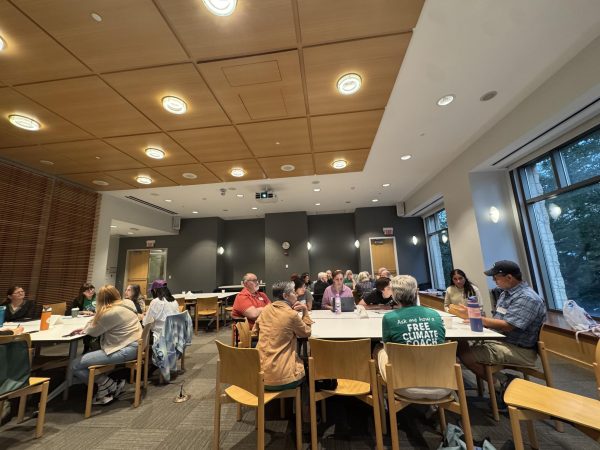Treating the winter blues
As we enter winter, our days shorten and the climate freezes. For 14 percent of American adults, this change affects the mood, causing the “winter blues.” An additional 6 percent of Americans have its more severe cousin: Seasonal Affective Disorder (SAD).
Your body cycles through wakefulness and sleep. When your eyes detect sunlight, they send signals to your brain that release wakefulness hormones. At night, your eyes tell the brain to produce a sleep hormone called melatonin. This cycling is called a circadian rhythm.
In winter, Illinois gets less sunlight and shorter days. Your brain might then overproduce melatonin, leading to inappropriate sleepiness. The disruption of your circadian rhythm is linked to the winter blues and SAD.
Nabiha Calcuttawala, an OPRF social worker, discussed the winter blues and SAD.
“We see an uptick of symptoms based on the changing of seasons,” said Calcuttawala. The transition from fall to winter coincides with midterms and examination period, which makes the time especially stress-inducing.
Calcuttawala emphasized the direct connection between students and social workers who are happy to meet and talk about your problems with you. If you feel comfortable, you should discuss any changes in mood with your parents.
OPRF also has numerous social work groups. These groups of students meet during the school day to grapple with specific issues, like stress and grief. If you are interested in creating or joining a group, contact your social worker.
There is also SUPPORT4U: the mental health hotline on your ID card. If you don’t want to discuss your issues face-to-face, you can connect anonymously with a mental health professional.
Besides getting help from adults, there are things you can do to independently counteract the winter blues and SAD.
It’s important to maintain good sleep hygiene.
Calcuttawala recommended holding consistent bedtime and hygiene routines. If you have racing thoughts before bed, it might be helpful to regularly take a ‘brain dump’ by writing in in a journal. By creating consistency, you can maintain good sleep.
“The research all says that folks should be shutting down their devices an hour before bed,” Calcuttawala emphasized. Screens emit blue light, which is harmful for your sleep. She recommended putting your devices in another room, out of reach. Using a physical alarm clock, instead of your phone, is a simple change that can make a huge difference.
Sleep impairment can come from other unfulfilled needs, like dehydration and hunger. Calcuttawala emphasized the importance of eating food and drinking water regularly.
A surprisingly effective method for dealing with the winter blues and SAD is with light. Light therapy resets your circadian rhythm, improving sleep.
Up to 80 percent of SAD sufferers will benefit from light therapy, according to Dr. Norman Rosenthal of Georgetown Medical School. Light therapy lamps are commercially available and make a worthwhile investment.
Rosenthal recommended using white fluorescent lamps, 12 inches by 18 inches, with 10,000 lux. “Every expert we talked to mentioned the importance of finding a lamp with a light area that’s at least 12 inches-by-18 inches,” underscored David Notis in New York Magazine. These lamps, like the Carex Day-Light Classic Bright Light Therapy Lamp, can retail as low as $65.99 on Amazon.
Lastly, research points out that winter blues and SAD are frequently exacerbated by Vitamin D deficiency. Consult with your parents and doctor if a Vitamin D supplement might be right for you. Because winter temperatures drive us inside, we absorb less Vitamin D from the sun. This can lead to deficiencies that make us sleepier and sicker.
The winter blues and SAD are common problems, but can be difficult battles to fight. School professionals want students to know you are not alone, and there are many resources at your disposal at OPRF.






